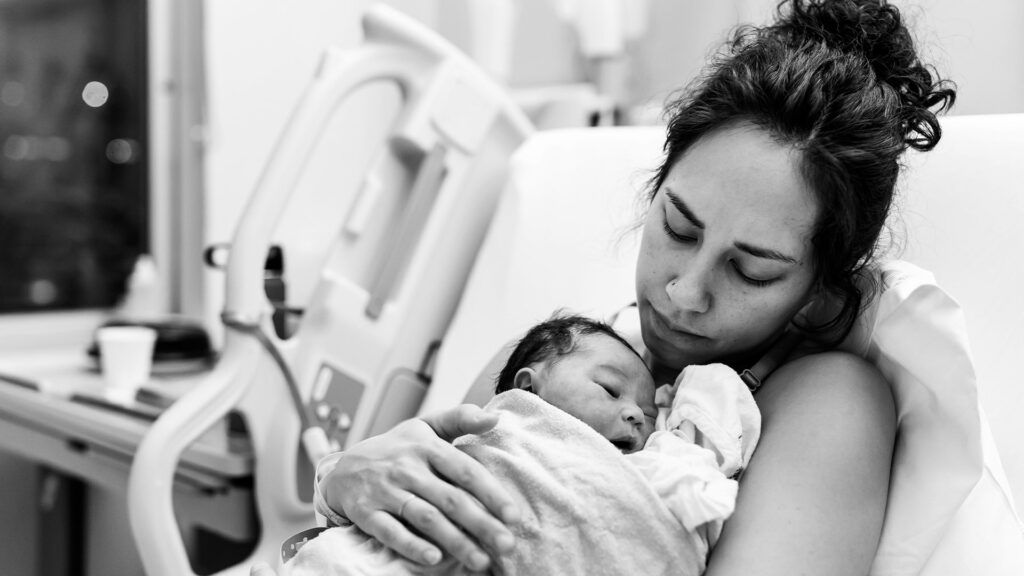Postpartum preeclampsia is the new onset of high blood pressure after giving birth. It is relatively rare, but can lead to serious complications without treatment.
While preeclampsia usually occurs before giving birth, postpartum preeclampsia occurs afterwards. A person can develop the condition even if they did not experience high blood pressure during pregnancy.
Doctors treat postpartum preeclampsia with medications to manage blood pressure until it stabilizes. Most people with postpartum preeclampsia fully recover.
This article discusses further details of postpartum preeclampsia, including causes, symptoms, and treatment.

Postpartum preeclampsia is a spike in blood pressure in the
Only 5.7% of preeclampsia and eclampsia cases occur in the postpartum period. As such, it is relatively rare for preeclampsia to develop after a person gives birth, rather than before.
However, preeclampsia poses as many health risks when it occurs after birth as when it occurs before. Without treatment, preeclampsia can progress to eclampsia, which affects brain function and causes seizures.
Around
Postpartum preeclampsia vs. postpartum hypertension
Postpartum hypertension is high blood pressure that occurs after giving birth, but without protein in the urine. In contrast, preeclampsia can cause both.
The symptoms of postpartum preeclampsia can include:
- changes in vision or light sensitivity
- persistent headache
- swelling in the hands, face, or feet
- sudden weight gain
- nausea or vomiting
- feeling generally unwell
- pain in the abdomen, especially on the upper right side
- protein in the urine
- organ dysfunction
Changes in blood pressure can also be a sign. A systolic blood pressure above 140 millimeters of mercury (mm Hg), a diastolic reading above 90 mm Hg, or both, may indicate postpartum preeclampsia.
Eclampsia symptoms
If preeclampsia develops into eclampsia, symptoms may include:
- seizures
- muscle pain
- severe distress, confusion, or agitation
- loss of consciousness
Seek medical help right away if a person experiences symptoms that could be preeclampsia or eclampsia.
Experts do not fully understand what causes preeclampsia, but
Those who have preeclampsia often have a lower blood flow in the uterus than those without the condition. This reduced blood flow may cause damage to the placenta, triggering and imbalance of certain chemicals in the body that cause high blood pressure and other issues.
In postpartum preeclampsia, it is possible that these harmful substances are still present in the body after birth, causing the condition to begin even after delivering the placenta.
A
- are over 35 years old
- had obesity before pregnancy
- had a C-section
- are Black
The review does not explore why the condition affects more Black people than white people. However, antenatal preeclampsia is also more common in Black people.
Learn more about racial and ethnic disparities in maternal health.
If a person is experiencing symptoms that may be due to preeclampsia, a doctor will perform a physical examination and take a detailed medical history. They may perform their own blood pressure testing.
Next, a doctor may order blood and urine tests. Around
In some cases, a doctor may need to run other tests to rule out other conditions or assess damage that preeclampsia may have caused. These tests may include:
The main aim of treating postpartum preeclampsia is to manage high blood pressure to help prevent it from causing damage.
Initially, treatment may involve a fast-acting medication to stabilize blood pressure. A person may take these orally or receive them through an intravenous (IV) infusion, which is an injection given into your vein over time.
After stabilizing a person’s blood pressure, a doctor may prescribe further medication to continue to maintain a stable blood pressure.
Other treatments may include:
- anticoagulants (blood thinners)
- diuretics to remove excess fluid from the body
- anticonvulsants (seizure medications)
While recovering from postpartum preeclampsia, it is important for an individual to:
- regularly monitor their blood pressure
- take medication as their doctor instructs
- avoid tobacco and alcohol
- rest as much as they can
- know the signs of a medical emergency, such as difficulty breathing or seizures
Although it may be difficult to avoid stress entirely in the postpartum period, it is important to rest and relax as much as possible. Enlisting help from partners, friends, or family may help with this.
In most cases, individuals recover fully from postpartum preeclampsia and no longer experience symptoms after treatment. Recovery could take from a few days to a few weeks.
Below are answers to some common questions about postpartum preeclampsia.
How likely is postpartum preeclampsia?
Postpartum preeclampsia is uncommon. Only around
How long can postpartum preeclampsia last?
Postpartum preeclampsia may last anywhere from a few days to a few weeks, but this will depend on how soon a person receives treatment and how their body responds to it.
Can you die from postpartum preeclampsia?
Most people recover from postpartum preeclampsia. However, if the condition progresses to eclampsia, it can be very serious.
Eclampsia can cause complications such as stroke and seizures. In severe cases, it can even be fatal. It is very important to look out for signs of preeclampsia and receive treatment for the condition as quickly as possible.
Pregnancy and parenthood resources
Visit our dedicated hub for more research-backed information and in-depth resources on pregnancy and parenthood.
Postpartum preeclampsia causes high blood pressure after giving birth, as well as high levels of protein in the urine. This can happen even if a person does not experience blood pressure issues during their pregnancy.
This condition can cause blood vessel damage and may affect other organs in the body. Without treatment, a person can develop eclampsia, which leads to serious complications.
Doctors can treat postpartum preeclampsia with medication that lowers blood pressure. They may also use other treatments, such as diuretics.
